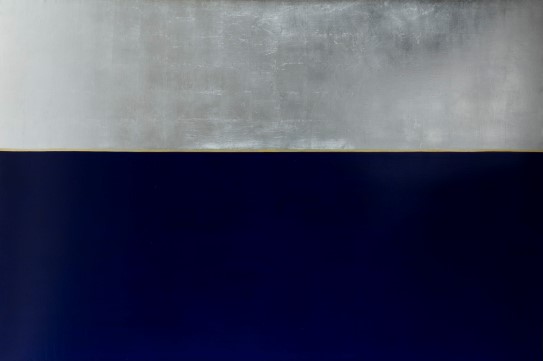N°8-1969 Grand horizon bleu
Anna-Eva Bergman
Transcription
Actor portraying Anne-Eva Bergman:
"A motif I keep returning to and that plays an important role in my paintings is my HORIZONS. In this motif I see eternity, infinity and into the unknown".
Narrator
N°8-1969 Grand horizon bleu is one of Anna-Eva Bergman's most startling and monumental horizons; it portrays an intense blue sea, a sky of silver, separated by a luminous yellow line.
In this painting she works with a pure color field and a reflective surface, luminous and clear. The large format invites you to let yourself be enveloped by the image.
The horizon motif in Bergman's artworks takes shape in the 1960s and continues for the rest of her career. She painted the first horizon motif in 1963 after a trip to Carboneras in south-eastern Spain. A horizon is also the last motif she paints before she dies in 1987, in the artwork titled The Last Canvas.
N°8-1969 Grand horizon bleu was shown for the first time at the Biennale in São Paulo in 1969, where she was represented with 16 monumental paintings.
The horizon, where sea and sky, or earth and sky meet, invites one to wonder about what is beyond the reach of the visible and, in Bergman's words, "the limits of human understanding that we constantly want to exceed". The horizon is rooted in art history and was a popular motif in the Romantic period. It’s a motif that opens up wonder, dreams and speculation.
Actor portraying Anne-Eva Bergman:
"When I see my finished horizon works, they awaken a kind of longing in me. But a longing for what? I don't know…"